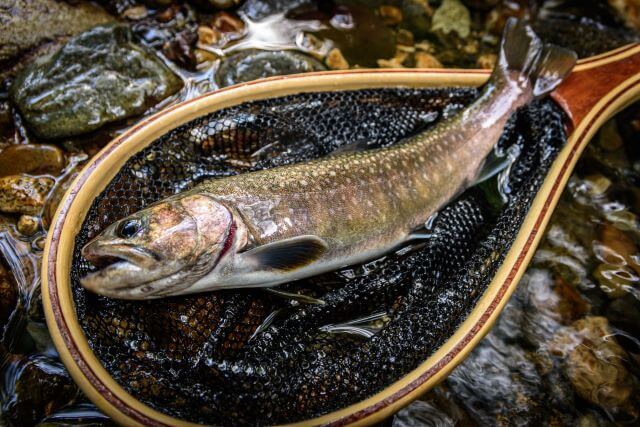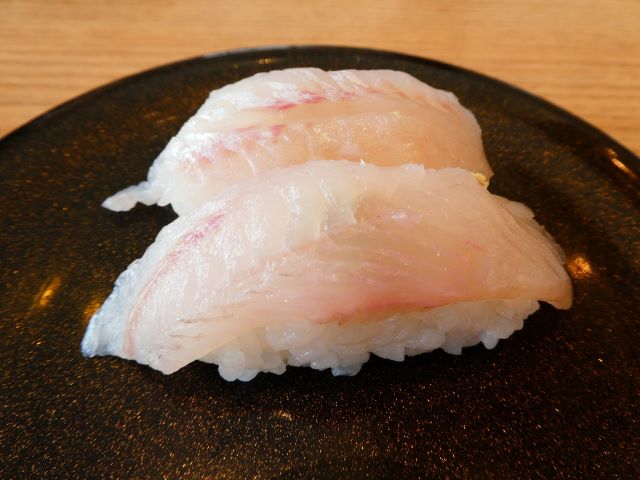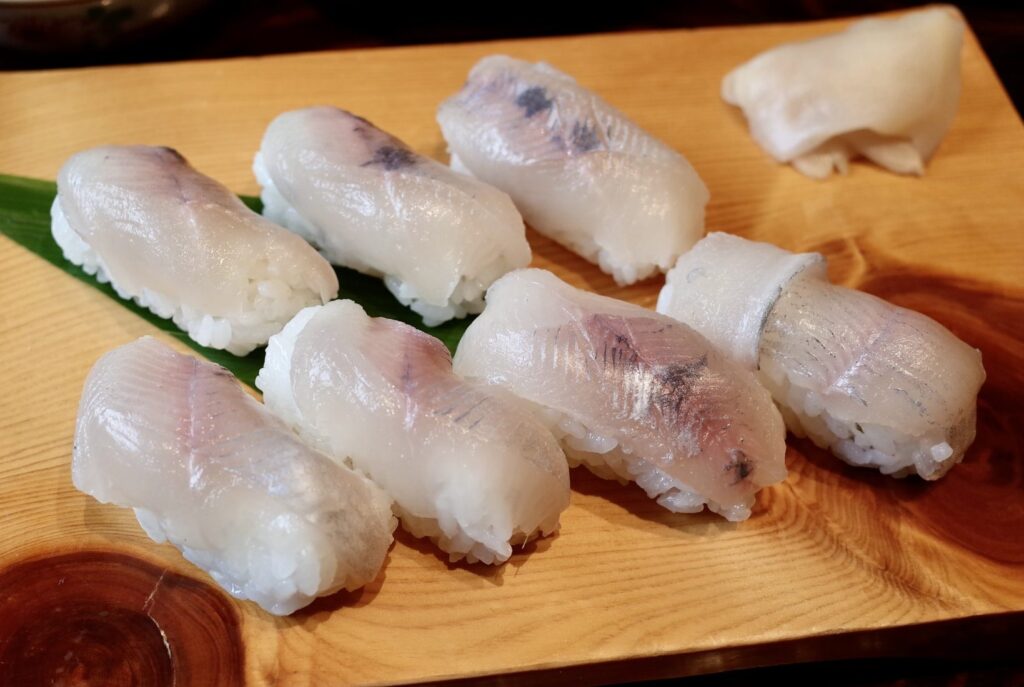
What is White spotted Char (Iwana)?
The Iwana group is divided into four subspecies, with body color and spots varying from region to region. The Ezo Iwana (Salvelinus leucomaenis (Pallas, 1814)) is distributed in Yamagata Prefecture, Chiba Prefecture and northward, Hokkaido to Kamchatka, Sakhalin, and elsewhere. The Yamato Iwana (Salvelinus leucomaenis japonicus (Oshima, 1938)) is distributed along the Pacific coast of Honshu west of the Sagami River in Kanagawa Prefecture, the Kii Peninsula, and the rivers flowing into Lake Biwa. The Nikko Iwana (Salvelinus leucomaenis pluvius (Hilgendorf, 1876)) is distributed throughout Honshu north of the Fuji River in Yamanashi Prefecture and the Hino River in Tottori Prefecture. The Gogi (Salvelinus leucomaenis imbrius (Jordan and McGregor,1925)) is distributed in the Chugoku region west of the Yoshii River in Okayama Prefecture and the Ibo River in Tottori Prefecture. Although all are land-locked, the Ezo Iwana has a descending sea-run type, the Amemasu (アメマス). However, there is one species.
The White-spotted Char (Iwana) is characterized by its low body height, long and slender body, fine scales, whitish spots on the body that are lighter than the body’s natural color, and white anterior margin of the pectoral and anal fins. It lives in the uppermost reaches of mountain streams and is separated from Yamame and Amago, which live in the same streams.
What does White spotted Char (Iwana) sushi taste like?

Because Iwana is in the salmon family, they descend to the sea or lakes during their growth period and migrate up rivers as adults. Most of the rivers in Japan are among the world’s steepest, with short lengths, elevation differences, and fast currents. Therefore, it is thought that Iwana has the strength and muscles to withstand the rapid river currents and become tighter. The best ways to cook tight-fleshed Iwana are deep-fried, grilled, and sashimi, which takes advantage of the fish’s firmness when eaten. Arctic char, a close relative, is highly prized in French cuisine, and lives in Lake Leman and Lake Annecy, and is actively farmed in many areas.
Even Iwana pressed sushi is quite rare, but if you want to eat nigiri sushi, you will have to go to a restaurant adjacent to an aquaculture farm in Nagano or Toyama. It may look like Shiromi, but it has the flavor of salmon itself. However, the meat and flavor are somewhat inferior to those of Yamame and Amago.

If you really want to try Iwana nigiri, you can find it at the Gokayama ShunsaiKobo Iwana in Toyama Prefecture.
Address: 72-1 Nishiakao-machi, Nanto City, Toyama Prefecture (in the Sasara Building)
[sc_apply url=”https://sushiuniversity.jp/apply/”]
We hope this information will be helpful.

Revision date: March 14, 2025
Share this article